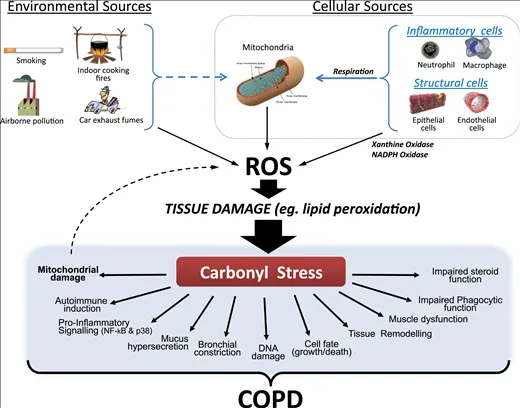Abstract
This article provides an in-depth exploration of oxidative stress, its role in health and disease, and its potential implications for medical research and therapies. By examining the underlying mechanisms, sources, and consequences of oxidative stress, we gain valuable insights into its significance in various physiological and pathological processes.
Introduction
Oxidative stress is a fundamental concept in biology and medicine, playing a crucial role in numerous physiological processes and the pathogenesis of various diseases. This article aims to elucidate the concept of oxidative stress, its sources, mechanisms, and its far-reaching implications for health and disease.
Definition of Oxidative Stress
Oxidative stress occurs when there is an imbalance between reactive oxygen species (ROS) production and the body's antioxidant defense mechanisms. ROS, including free radicals like superoxide anion, hydroxyl radical, and non-radical species like hydrogen peroxide, are highly reactive molecules containing oxygen atoms that can damage cellular components.
Sources of Oxidative Stress
Oxidative stress can originate from both endogenous and exogenous sources:
1. Endogenous Sources:
- Mitochondrial respiration: The electron transport chain in mitochondria is a primary source of ROS during ATP production.
- Inflammation: Immune cells generate ROS to combat infections, contributing to oxidative stress.
- Metabolism: Cellular metabolism generates ROS as byproducts of energy production.
2. Exogenous Sources:
- Environmental pollutants: Exposure to pollutants like cigarette smoke and air pollution introduces exogenous sources of ROS.
- Radiation: Ultraviolet (UV) radiation from the sun generates ROS in the skin.
Mechanisms of Oxidative Stress
Oxidative stress exerts its effects through several mechanisms:
1. Lipid Peroxidation: ROS can damage cell membranes by attacking unsaturated lipids, leading to lipid peroxidation and compromised membrane integrity.
2. Protein Oxidation: Oxidation of proteins can impair their function and structure, leading to dysfunctional enzymes and misfolded proteins.
3. DNA Damage: ROS can cause DNA strand breaks, mutations, and base modifications, contributing to genomic instability and potential carcinogenesis.
Implications for Health and Disease
Oxidative stress is implicated in various health conditions:
1. Aging: Cumulative oxidative damage is a hallmark of aging, leading to age-related diseases.
2. Neurodegenerative Diseases: Oxidative stress plays a role in Alzheimer's, Parkinson's, and other neurodegenerative disorders.
3. Cardiovascular Disease: ROS can damage blood vessel walls and promote atherosclerosis and heart disease.
4. Cancer: Oxidative stress-induced DNA damage can contribute to the initiation and progression of cancer.
5. Diabetes: Oxidative stress is linked to insulin resistance and complications in diabetes.
Therapeutic Implications
Understanding oxidative stress has opened new avenues for medical research and therapies:
1. Antioxidants: Antioxidant compounds, such as vitamins C and E, are explored for their potential to counteract oxidative stress.
2. Targeted Therapies: Developing drugs that specifically target ROS or enhance endogenous antioxidant defenses.
3. Lifestyle Interventions: Encouraging a healthy lifestyle with balanced nutrition and regular exercise to mitigate oxidative stress.
Conclusion
Oxidative stress is a fundamental biological concept with profound implications for health and disease. Recognizing its role in various physiological and pathological processes has led to ongoing research and the development of potential therapeutic strategies. As our understanding of oxidative stress deepens, it may provide valuable insights into the prevention and treatment of a wide range of medical conditions.
Bibliography:
1. Halliwell, B., & Gutteridge, J. M. (2015). Free radicals in biology and medicine (5th ed.). Oxford University Press.
2. Valko, M., Leibfritz, D., Moncol, J., Cronin, M. T., Mazur, M., & Telser, J. (2007). Free radicals and antioxidants in normal physiological functions and human disease. The International Journal of Biochemistry & Cell Biology, 39(1), 44-84.
3. Sies, H., & Jones, D. P. (2020). Reactive oxygen species (ROS) as pleiotropic physiological signalling agents. Nature Reviews Molecular Cell Biology, 21(7), 363-383. doi:10.1038/s41580-020-0230-3



Post a Comment
Full Name :
Adress:
Contact :
Comment: